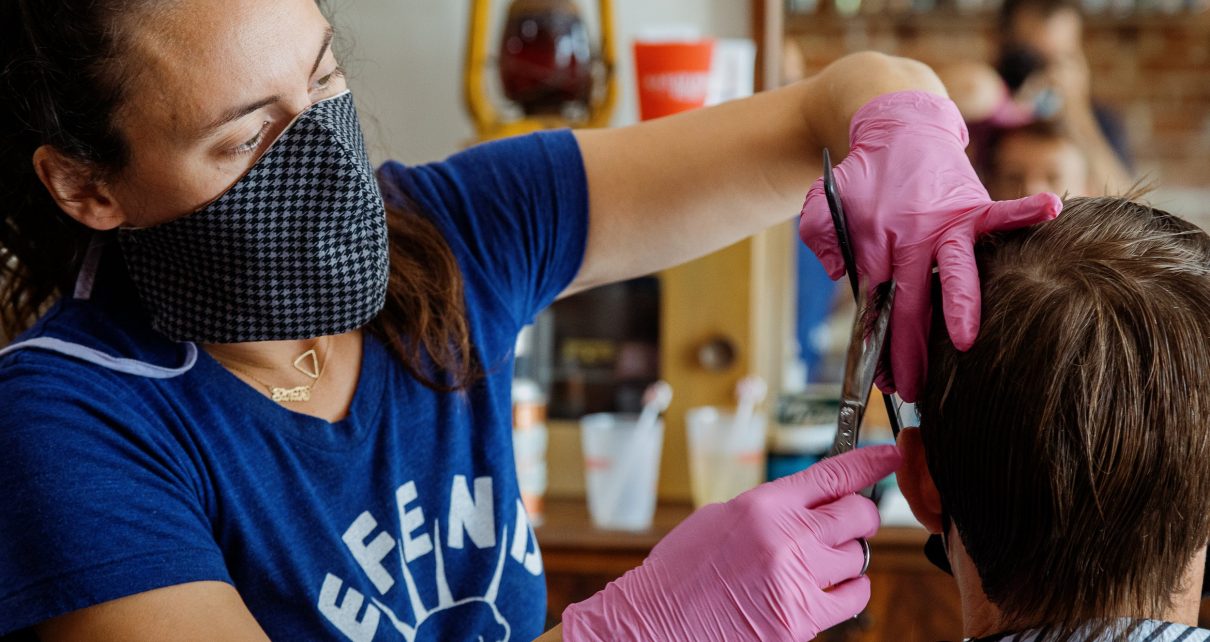On March 11, 2020, the NBA suspended its season after a Utah Jazz player tested positive for COVID-19. Within a week, March Madness was canceled, and soon after that, many states began to issue stay-at-home orders that have lasted for weeks if not months. Super-spreading events (the Biogen conference, a Washington state choir practice and a post-funeral gathering in southwest Georgia, for example) made it evident that halting gatherings would be an essential part of ongoing public health interventions in the United States and elsewhere.
Now, more than two months later, many states, including Georgia, Florida, Wisconsin, Maryland and others, are beginning to reopen their economies by relaxing previously stringent lockdown policies. These changes shift the dilemma of deciding where and how to venture out from statewide policy onto individuals. For many, the opportunity for a slice of normalcy seems like welcome relief.
But the reality is that the risk of COVID-19 has not passed. Far from it. In the two weeks preceding this essay’s publication, there were more than 300,000 new positive cases, there were 300,000 new positive cases of COVID-19 reported (for more details see the COVID Tracking Web site). These new cases are almost certainly a significant underestimate of the number of new cases in the U.S., impacted by undertesting, reporting lags and challenges in identifying mild or asymptomatic cases. Variation in case trajectories makes it hard to figure out: what is the risk of going out to dinner, really?
Our team of interdisciplinary researchers from Georgia Tech, Stanford University, and the Applied Bioinformatics Laboratory has developed an online dashboard, called the COVID-19 Risk Assessment Planning Tool, to help individuals make informed decisions about risk and take preventive steps to reduce transmission. This risk assessment planner provides an estimate that answers the following question: what is the chance that one (or more) individuals is infected with COVID-19 in a group of a given size?
In order to figure this out, we must ask a different question: what is the chance that no one is infected? If we knew the probability p that an individual was infected, then the probability that person is not infected is (1–p). The probability that no one is infected in a group of size n (whether n is 10, 25, 100, 250 or so on) is equivalent to tossing a biased coin n times, with odds (1–p) to come out heads, each and every time, or (1–p)n. By extension, if even one coin-flip comes out tails, that implies that someone might transmit COVID-19. Hence, the probability that one or more individuals is infectious in a group of size n, given a per-person probability p of being infectious is: 1–(1–p)n.
In order to estimate the per-person probability at the state level, we use the past two weeks of reported cases as an estimate of the number of potentially active circulating infections in a given state or the entire U.S. The mean infectious period for COVID-19 is approximately one week, but we have included a conservative bound on circulating cases given variability in the onset of infectiousness and associated viral shedding..
Hence, if there are 50,000 new cases in a state of 10 million, the per-person probability is 0.5 percent. That seems quite small. But, the probability that at least one individual is infected with COVID-19 goes up rapidly with group size. In this example, there’s a 4.9 percent chance that one or more people in a dinner party for 10 would be infected, a 22 percent chance that one or more people in a restaurant with 50 would be infected, a 71 percent chance that that one or more people in a dance club for 250 would be infected, and over a 99 percent chance that one or more people in a concert or sports event for 1,000 would be infected.
In other words: small risks for individuals rapidly become large risks when viewed collectively.
Our estimates incorporate considerable uncertainty because we don’t know exactly how many people are currently infectious. “Silent spreaders” are responsible for a significant fraction of infectious transmission but may never get diagnosed or reported as cases. Additional reporting lags and limited testing capacity may mean a substantial fraction of cases remain undetected.
The dashboard accounts for the ascertainment bias by multiplying the estimated circulating cases by a factor of five, 10 or 20, in range with recent estimates of ascertainment bias arrived at from serological surveys. These serological surveys provide a means to estimate who has been sick rather than who is sick, providing an independent check on the extent to which we have missed cases. These parameters can be varied in the dashboard, recognizing the significant uncertainty and heterogeneity involved in these types of estimates.
Our hope is that being more aware of one’s risk can help individuals take precautions. Just as a weather forecast tells you whether it’s going to rain allowing you to reduce your risk of getting wet, there are ways to reduce one’s risk of being infected or of unwittingly infecting others. Mask-wearing, social distancing, interacting outdoors at distance for shorter periods (rather than indoors in close proximity for longer periods), handwashing and monitoring for symptoms (including unusual symptoms like loss of smell/taste) may reduce risks of transmission.
It is critical to keep in mind that the risks of being near someone with COVID-19 are almost certainly higher now than they were two months ago in most parts of the U.S. The COVID-19 risk assessment planner includes daily updates of risk at state levels and is a reminder that we need more testing at scale, both to stay informed and also to help stop chains of transmission before they start. The vast majority of us remain susceptible to infection, and we remain at risk in the absence of a safe, effective vaccine.
When deciding if and how to go out, it is critical to remember that, while we may be worried about someone else in a crowd putting us at risk, that someone in the crowd might just be us. Our empathy (and a bit of understanding of the mathematics of risk) may very well save lives.




